Representation matters and in today’s war for talent, representation through the recruitment process could be a key ingredient to attracting top talent to your business.

With low rates of unemployment, job candidates are now in a position where they can be more selective about the job they choose, and in many cases the job of choice is not necessarily the one with the highest salary. Since the COVID-19 pandemic, we are seeing workers re-assess what is important to them and candidates are making active choices to work for organisations that better align with their values and offer flexible work practices or work-life balance.
Be your candidate’s employer of choice
According to a U.S. Diversity & Inclusion Workplace Survey, 76% of employees report that a diverse workforce is an important factor when evaluating companies and job offers. Furthermore, Diversity Council Australia’s Inclusion@Work Index data shows that 77% of Australian workers in 2021 support or strongly support their organisation to create a workplace which is diverse and inclusive. These results also showed that Australian workers are 3.5 times more likely to leave their current employer if they have a non-inclusive manager.
However, diversity and inclusion practices should not be a ‘tick box exercise’. Efforts towards diversity and inclusion must be formed from a genuine desire for an inclusive workplace and all the benefits that this provides.
A diverse team delivers diverse ideas
Diversity in decision making allows your business to look at things from a more global perspective and promotes creativity and innovation. As a leader, if you are making an important decision, (such as hiring a new employee for your business) wouldn’t you want to feel confident the decision is being considered from a diverse range of perspectives? A room full of people with similar backgrounds to yours will not produce the same results.
Research suggests that companies in the top quartile for gender diversity on executive teams are 25 percent more likely to have above-average profitability than companies in the fourth quartile and companies in the top quartile for both gender and ethnic diversity are 12 percent more likely to outperform all other companies in the data set.
Break down barriers in the recruitment process
Standard recruitment and selection processes adopted by most businesses can be a significant barrier for people from underrepresented groups. According to research published in the ‘Are We There Yet’ report, 92% of organisations use reference checks, resumes and cover letters to screen job applicants, but only 32% use psychometric or aptitude tests for applicant screening. This practice can work against diverse candidates who may be knocked out in the initial shortlisting process due to their gender, age, race, educational background or even socioeconomic demographic. On the other hand, psychometric assessments and aptitude testing solely focuses on the potential of the candidate to add value to your business.
In today’s tough candidate market, many businesses are looking at growing their own talent by implementing strategic talent acquisition initiatives targeting underrepresented groups. Such initiatives include traineeship or graduate programs specifically targeted for Aboriginal and/or Torres Strait Islander people, programs designed to place people who are living with a disability. Some businesses are also targeting people in the later stages of their career by implementing strategies to entice retirees back into the workplace.
Tips to improve diversity and inclusion in your workplace
Here are some simple tips to promote diversity in your recruitment practices, demonstrate you are an inclusive employer and to ensure a fair and equal playing field for your candidates through the selection process. Although not all businesses may have the infrastructure to manage these elements internally, leveraging external HR and recruitment resources as an extension of your team can help alleviate the pressure:
- Develop an Employee Value Proposition (EVP) that clearly articulates your commitment and actions to drive an inclusive workplace culture, including the inclusive benefits your business offers to employees (e.g. flexible working arrangements)
- Carefully review the position description and the wording of your advertisement – is the language gender-neutral? Are you sticking to the inherent requirements of the role and not deterring candidates with a long list of ‘nice to have’ skills or indirectly discriminating against a cohort of people?
- Provide a mechanism for candidates to request special assistance during the application process to ensure all applicant needs can be accommodated. For example, communication barriers, physical access, mobility requirements or cultural preferences
- Consider where you are advertising – are you utilising any specific job boards, newsletters or networking groups geared towards diverse candidates?
- Provide education on both diversity and inclusion as well as unconscious bias, to people within your workplace who are responsible for decision making
- Utilise ‘blind recruitment practices’ at least in the initial shortlisting stage. Consider using an external recruiter who can remove demographic information such as name, home address, school or university name from candidate information to help remove any bias from the shortlisting process
- Ensure all interview panels represent diversity. For example, ensure each interview panel is gender balanced (at a minimum) and consider what other representation would be relevant, based on your pool of candidates or on the nature of the position – if the position is providing services to Aboriginal and/or Torres Strait Islander people, it would be best practice to include an Aboriginal and/or Torres Strait Islander person on the selection panel.
- Hire for ‘culture-add’ (not ‘culture-fit’) and use aptitude and psychometric testing to assess candidates on their future potential rather than selecting candidates purely on past performance
- Consider adding quotas to your shortlisting process – create a rule that the first stage of interviews must be gender balanced and/or include a percentage of candidates from minority groups or other target demographics
- Check your website and other marketing collateral – does it demonstrate diversity? Check for things like inclusive language and to ensure images used on the website represent diversity.
Using the above points as a guide may help you consider how you can better promote diversity and inclusion within your business.
For additional support with your recruitment activities, please reach out to our HR & Recruitment team and complete our Contact Us form
Meet our experienced and dedicated team of consultants
Our Consultants
Want to know more? Get in touch.
Please fill out the form below to make an appointment or request more information.
h
Let our wealth of knowledge and experience guide you.










